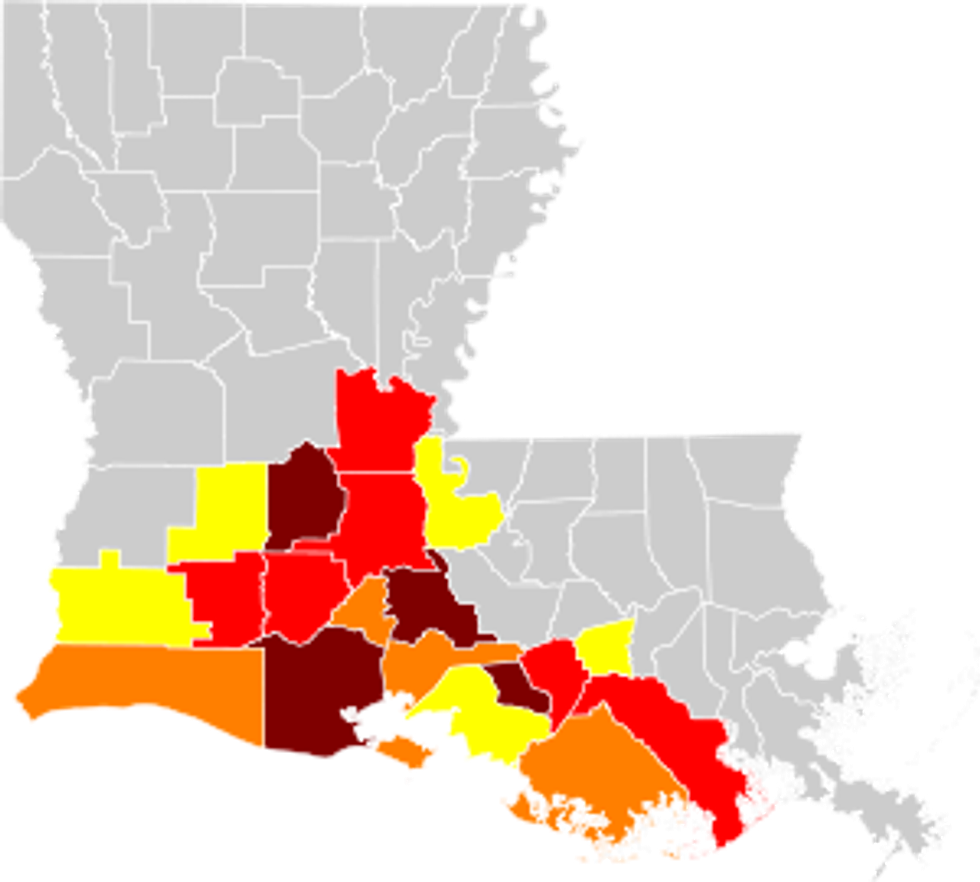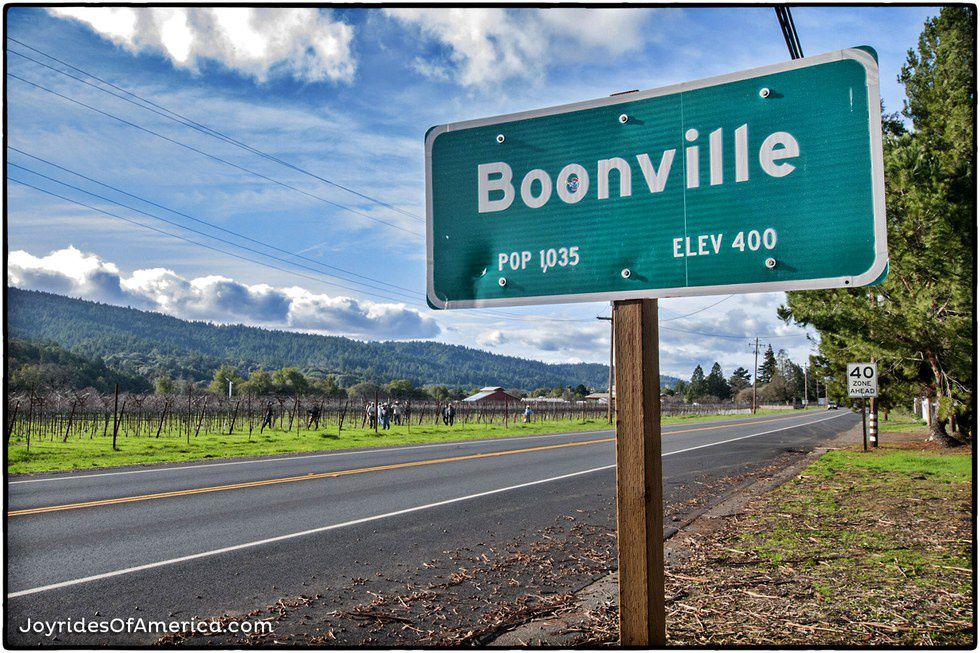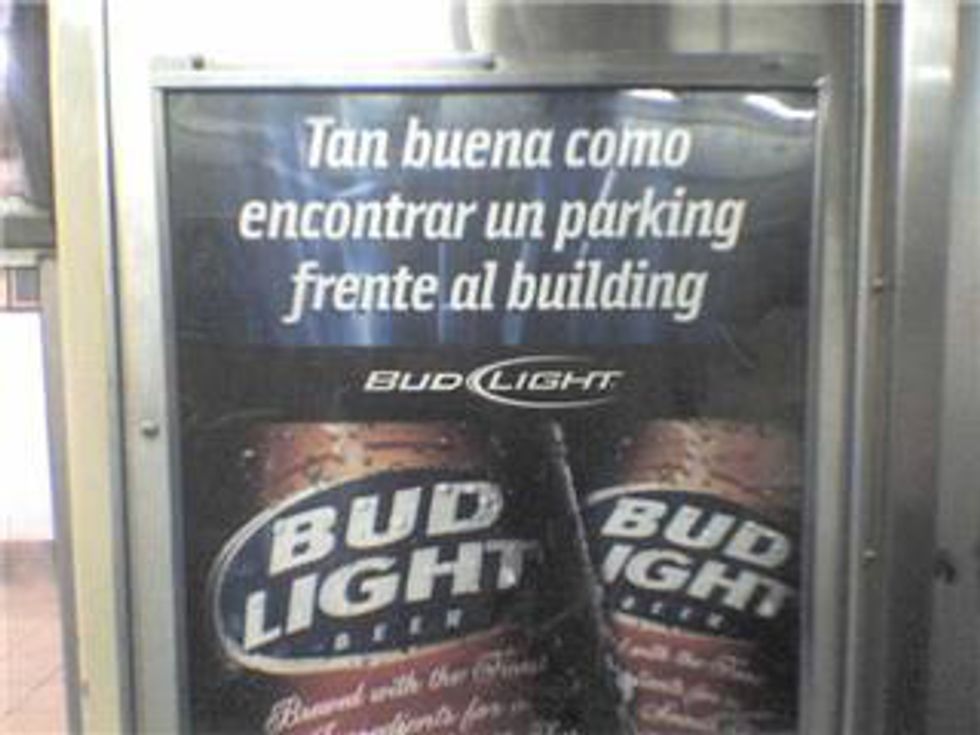In the words of one of our presidential candidates, we can all agree that the United States is "YUGE," geographically speaking. Living in a larger country you expect that people will talk differently. For instance, those in the Midwest are stereotypically known for the flatter, nasally dialect (which I am guilty of and often made fun of when I am at school). Those in the south have their famous relaxed drawl, those in New York, mainly Brooklyn, have a louder sound where they pretend the r in car doesn't exist and think talk is spelled "toolk", and lastly, the harsh and valley girl-like tone of California. Though most are aware of these dialects that make Americans, Americans, many are unaware of the many languages and dialects that are unique to the United States that are not found anywhere else in the world. Here are a few that I have the most knowledge of that I would love to share!
1. Pennsylvania Dutch
Advertisement written in Pennsylvania Dutch
The Amish people of Ohio and Pennsylvania speak a unique dialect of German. Now, you might be asking, "German? But I thought you said it was Dutch?" This is a linguistic mistake made by the American settlers. The German word for German is Deutsche, which can be easily confused with Dutch. In most Amish towns in Ohio and Pennsylvania, children are taught at a young age how to speak Pennsylvania Dutch, at sometimes, many children at first do not understand English until going into school!
Amish Family
The language is still thriving today due to it being spoken at home and mass in their local churches. Here is a video explaining the difference in pronunciation with German and PA Dutch!
2. Louisiana French/Creole
"Let the Good Times Role" Iconic saying of New Orleans
Many who have taken US History know that in 1803, the United States bought Louisiana from the French Government. Because of France owning Louisiana, many of its settlers naturally spoke French. With many immigrants living in the state, the French spoken there began to have an absolute uniqueness and pronunciation. Places like New Orleans, Lafayette, and Baton Rouge became melting pots of Haitian, French, Italian, Québécois & Acadian (French-Canadian), and African people. This made the languages mix, creating a dialect not found anywhere else in the world.
French Quarter, New Orleans, Louisiana
After the Purchase, it became illegal to speak Louisiana French, due to the US wanting an Americanization of the land. Not only this, but French was considered a poor man's language. The language listed as an endangered language (yes, languages can be endangered like animals), and only elders mainly spoke the dialect. Up until the 1980s, The Louisiana Senate proposed a plan to revive the language, teaching it to children, and creating immersion programs. Since not many adults could speak the language, many teachers had to be hired from different countries such as France and Canada, and clubs are created to teach more of the Louisiana slang. More and more counties are creating immersion programs for children, and this can create a renaissance of French Louisiana Heritage in America's Wetland.
Map of where Louisiana French is still spoken, lightest with least amount of speakers, darker with the most (up to 25%-30% of the population)
Here is a video of a younger man speaking the dialect.
3. Boontling
Located in Booneville, California is a man made language known as Boontling. With its origins dating back to the 1870s, Boontling is believed to be created by the coal miners of the town so outsiders could not understand their conversations. About 100 people still speak it today, and it is slowly becoming extinct. Many of the phrases are English but are meant to say something different. For instance, Pancakes are "Saddle Blankets" and a telephone is a "Bucky Walter" or a "Joe". There are over 1000 unique phrases, many of them with origins from Irish, Scottish Gaelic, Spanish, and Pomoan, a Native American language.
4. Spanglish
Many would joke that Spanglish is the moment when a Spanish learner mixes English and Spanish together when learning or vice versa with a Spanish speaker trying to learn English. However, many linguists are beginning to argue that Spanglish may be a dialect of Spanish.
In the major Hispanic areas such as Miami and Los Angeles, many Spanish speakers speak significantly different than their countries of origin like Cuba and Mexico. English words are given a Spanish twist, for instance, the Spanish world for to eat lunch is "almorzar", but in Spanglish, it's "lonchar". The well known Spanish word "fiesta" is "El Paree" coming from the word party! Instead of saying the Spanish word for to park "Estacionar" many Spanglish speakers will simply say "Parquear".
Advertisement in Spanglish
Many Spanish speakers in America use these words and do not know the official words in Spanish! The list goes on and on, with there now being dictionaries and books dedicated to teaching the dialect. The United States is now considered to be the fourth largest Spanish-speaking country in the world, behind Argentina, Spain, and Mexico.
Purple Dots representing the over 35,000,000 Spanish speakers in the United States
5. The Native American Languages
Navajo Nation Festival
Obviously, this is a no-brainer, because, after all, they are Native American. However, most people believe that these languages are dead, and sadly, many are. Similar to Louisiana French, it was considered illegal to speak languages like Navajo and Cherokee, and many younger generations do not speak these languages today because of it. Revitalizations within the past two decades have occurred with languages like Navajo, with there now being over 170,000 speakers. The Navajo language is mainly in Arizona, Colorado, New Mexico, and Utah; it has some of the most unique sounds in the world, with its particular clicking-like tone.
Bible written in Navajo
The language was used in WWII while giving codes during battles, so the Japanese could not pick up their conversations. The Navajo Nation is now creating immersion schools such as Tséhootsooí Diné Bi'ólta' (have fun pronouncing that!). These schools are half in English, and half of the day is in Navajo.
Navajo is not the only native language reviving, with many immersion schools popping up in Hawaii as well. In 1985, it was estimated by the US Census that around less than 200 Hawaiians spoke their native tongue, since 2010, the number rose to 21,000 since 2011! And it is not only natives speaking it, here is an adorable video of non-native Hawaiian children speaking fluent Hawaiian!
To conclude, nothing frustrates me more when I hear a fellow American state that we do not have "culture." Many Americans are uninformed of these languages and cultures that are uniquely and solely American. Language has the power to give us a character in life, and it can make us understand how special this country is! The more we learn and support language learning, especially these American languages, generations to come will be proud of the vast distinction of being American!






























